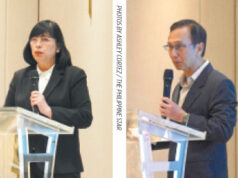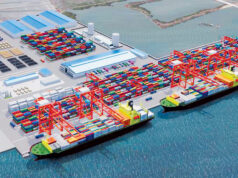The country’s insurance sector exhibited another strong growth in 2017. Data from the Insurance Commission (IC) showed that the industry’s total premiums grew to P259.646 billion, up by 11.97% from P231.883 billion in 2016. According to Insurance Commissioner Dennis B. Funa, this is partly due to the growth of the country’s equities market and strong car sales.
As a result of the aggressive growth of the country’s automotive industry in recent years, car insurance has been one of the biggest segments for nonlife insurers today.
Sales of vehicles in 2017 grew robustly, especially at the end of the year, as consumers went into panic buying due to the anticipated implementation of the Tax Reform for Acceleration and Inclusion (TRAIN) Law that raised excise taxes on cars.
According to the data released last January by the Chamber of Automotive Manufacturers of the Philippines, Inc. (CAMPI) and Truck Manufacturers Association (TMA), the groups’ member companies sold 425,673 vehicles last year, up by 18.4% from the previous year’s 359,572 units.
Along with the increase in car sales, the number of vehicle owners who purchased car insurance also shoot up.
Car or auto insurance, as defined by Investopedia, is a policy purchased by vehicle owners to mitigate costs associated with getting into a vehicular accident.
“Instead of paying out of pocket for auto accidents, people pay annual premiums to an auto insurance company; the company then pays all or most of the costs associated with an auto accident or other vehicle damage,” Investopedia said in its Web site.
Car accidents are unpredictable. It can happen to anyone even to the most careful driver on the road. In times like this, the best tool that every car owner can take advantage of is the benefits brought by insuring the car. While car insurance cannot prevent accidents from happening, it saves the owner to further financial damage caused by unfortunate incidents.
In the country’s capital region alone, a total of 110,025 road crash incidents were recorded in 2017, which is 703 cases higher from the previous year’s 109,322, according to the Metropolitan Manila Development Authority (MMDA). The recent figure translates roughly to 300 cases of road crashes per day.
Vehicle marketplace Carmudi said on its Web site that having a car insurance has become more of a necessity than a luxury these days.
“In fact, it’s one of the best tools you can take advantage of when it comes to providing financial protection against physical damages or injuries resulting from vehicular accidents, traffic collisions and natural calamities,” Carmudi said.
“But more than that, a vehicle insurance gives you an extremely important benefit money can’t buy: peace of mind. This comes in many forms: not worrying where you’ll get the money to pay for your hospital bills and car repair; not fearing how you’ll pay for the injuries of other people; and not fretting about how your family will survive if you’re bedridden and unable to work for a long time,” it added.
Carmudi added that one of the most important steps every vehicle owner needs to do is to become more informed about the insurance options. In this way, the owner can choose the best insurance that fits his needs and budget.
All of the different types of car insurance policies today fall under two categories: third-party liability insurance and first-party insurance. Simply put, third-party liability insurance is an insurance that covers any wrongdoings that the policy-owner has made to other people and their possessions while first-party insurance covers casualties that the insurance holder or his passengers experience in an accident or collision.
In a report, professional services firm Ernst & Young said that the automotive retail will shift from a product-driven to a customer-centric approach to drive customer loyalty and to adapt to changing customer behavior and expectations. In this matter, insurance companies would play an important role.
“Achieving this transformation in automotive retail will not only require a concerted effort from both automakers and dealers, but will also demand an unprecedented level of collaboration with other stakeholders in the ecosystem, particularly insurance companies, auto finance and after-sales market participants,” Randall J. Miller, Global Automotive and Transportation leader at Ernst & Young, was quoted as saying in the report. — Mark Louis F. Ferrolino



